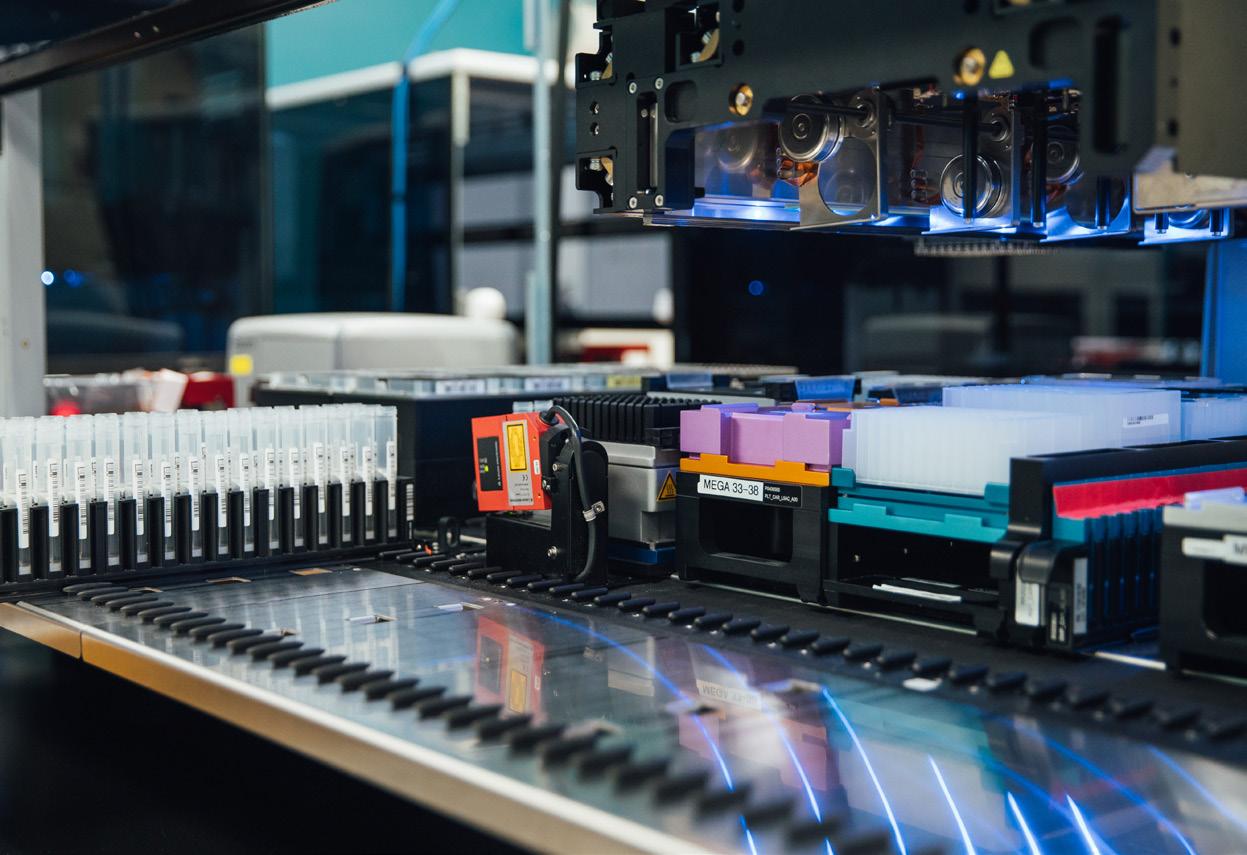
4 minute read
Design Defined
THE MODERN MEDICAL ERA
Medical innovation is finally having its moment in the spotlight as industry-level silos are breaking down and multidisciplinary professions are being born. Clinical professionals aren’t the only drivers for medical innovation anymore. The industry is gaining complementary impact from designers, consultants, academics and entrepreneurs. This can be largely attributed to increased media trends in personal health awareness, rapid advancements in science and technology, and a growing need for convenient people-centered experiences.
The three big trends dominating and defining the modern medical space are big data, contemporary product design and accessible services. Below are examples of how these trends are being realized in society today.
Big Data Minority-based misdiagnoses are still a common healthcare problem that people face today, due to the lack of diverse sample sizes within genetic research. This often leads to skewed outcomes and assumptions that can misrepresent or harm the groups of people who were left out of the data collection. Population health initiatives are beginning to alleviate this issue by leveraging the power of big data to provide better representation among a matrix of different socio-demographic traits. In 2020, we are seeing healthtechnology organizations like Color Genomics address population-wide research by democratizing access to highquality genetic information through its platform.
Color Genomics enables the delivery of advanced healthcare through clinical genetics, resulting in more informed patients and more effective relationships with clinical professionals. The company makes precision health programs accessible, convenient and cost-effective for everyone, serving health systems, employers, research institutions and individual consumers. Color’s Population Genomics Platform offers modular and end-to-end solutions that enable organizations to effectively build and scale population health programs.
Contemporary Product Design Maternity products have made leaps and strides through the physical and experiential modernization of everyday products. Willow is a revolutionary example of how good product design aims to eliminate critical pain points during the use of a breast pump. Pumping used to be a loud, inefficient and physically constraining process. Willow has made it so that pumping can be hands-free, audibly discreet and physically compact.
Its simple design houses the pump, flange and milk bag all in one piece, making it easy to pump on the go. Additionally, Willow has an app that allows mothers to track their pumping sessions in real time. This 21-century women’s health product does more than just innovate on the breast pump experience; it elevates the daily lives of new mothers who are enabled to maintain an active and multifaceted lifestyle while providing for their children.
Accessible Services In the United States, someone is sexually assaulted every 72 seconds. However, fewer than 30% of sexual assault victims report the crime, and fewer than 1% of sexual assault cases end in a conviction. Sexual assault evidence kits, or rape kits, are important tools that help victims report and seek justice, but the current kit format makes the experience long, difficult and often traumatizing for both the victim and the nurse. The procedure within the current kit can only be performed in some emergency rooms and can take between two and 10 hours to complete. Victims often choose to not report the assault or decline to have evidence collected due to the dated nature of the kits.
Hark is an over-the-counter, post-sexual-assault health kit and a rape kit service that makes help more accessible.
Color Genomics

Willow


The post-assault health kit includes health resources for immediate care like Plan B, self-testing for sexually transmitted infections and information about resources after an assault (mental health options, rape kit information, reporting, etc.) This allows victims to consider their options on their own time and decide what they want to do. If they choose that they want to get a rape kit, they can either call the Hark phone number or log into the app to request a sexual assault nurse examiner (SANE), trained evidencecollecting nurses who will come to their preferred location to perform a sexual assault evidence exam (rape kit) and help the victim begin the reporting process. Hark is part of Antya Waegemann’s master thesis, titled “When No One Believes You,” at the MFA Products of Design program at the School of Visual Arts. She investigated the responses to sexual assault victims and produced six redesigned alternatives, one of which is Hark.
These examples are a few of many contemporary initiatives being taken to mold the future of medical innovation. More importantly, they showcase the breadth of the industry and the variety of tangible outcomes. While these products help illustrate the context of modern healthcare, more opportunities lie ahead to reach broader audiences through thoughtful design.
—Dipali Aphale, IDSA dipali.aphale@network.rca.ac.uk
Dipali is a designer based in San Francisco and a dual-master’s graduate from the Royal College of Art and Imperial College London.





